Big Bend
Our friends at Other Means Magazine took our Active collection for a gravel adventure through Texas' Big Bend National Park
- Words by: Brad Hammonds
- Images By: Other Means
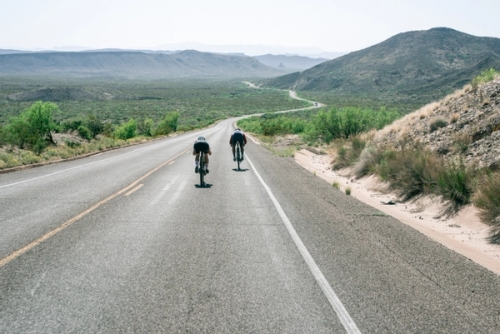
Other Means is a print magazine, digital space and cycling community whose mission it is to tell stories and capture rides that share the human side of cycling—whether it’s an adventure close to home or half a world away. After all, every journey is personal, and we choose to enjoy ours by bike.
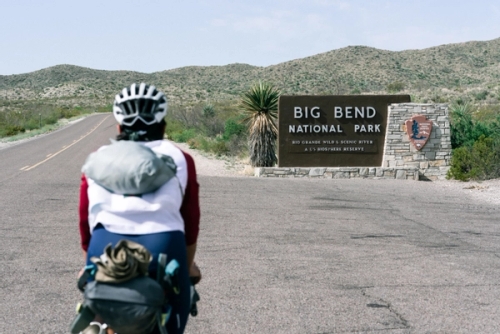
Bright yellows, vibrant reds and pinks—seemingly every single cactus in West Texas was in bloom as we covered the final stretch of Highway 118 south from Marathon to our campsite a few miles outside Big Bend National Park. Obviously, the plant life here had fared a bit better than the non-endemic landscaping around homes back east when the big freeze rolled through Texas a couple of months ago. Once those temperatures crept up above their record lows and the snow had melted, the imported neighborhood plants soon followed suit, reduced to sad green puddles of shapeless, organic goo on the sidewalks of San Antonio.
Apparently, the flora of Terlingua, a tiny mining town deep in the heart of West Texas, had been as unbothered by February’s cold as it was now by the relentless, scorching heat. Of course, non-endemic ourselves, we knew we’d face challenges being maladapted to a land of such extremes. But for now, we had more immediate worries than whether we were destined to melt like the sad plants back home. We had to set up camp.
David and I woke early on the morning of day one and drove a half hour to reach the ranger station. Our plan was to spend four days riding gravel roads around Big Bend, and we needed to secure camping permits for the nights we’d spend inside the national park. David works as a bike mechanic in Austin and was the only member of our five-person crew with any previous experience riding in Big Bend. He’d joined the ride along with his partner Natalie and teammate Mike, all regular fixtures in the Austin racing community. Rob, the fifth member of our outfit, is newly Texan by way of the UK, and this would be his first true bikepacking trip.
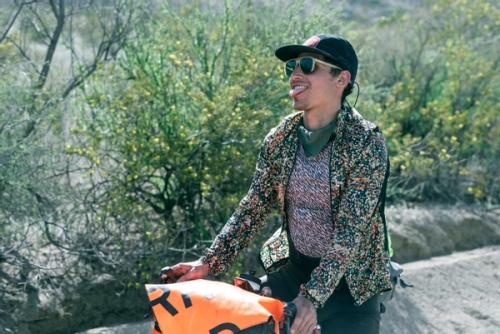
"Undulating rollers carried us across pristine Texas gravel, past abandoned RVs and plenty of No Trespassing signs..."
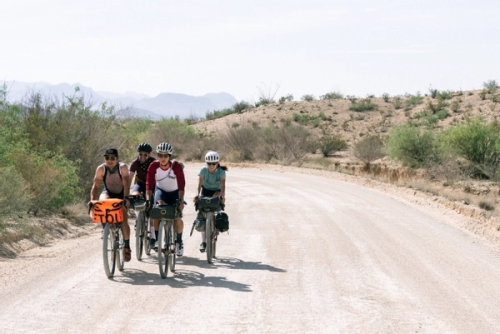
With permits in hand and temperatures already rapidly rising, we zipped back to camp, grabbed our bikes and descended into the tiny town below. The route we’d planned followed ranch roads around the northern edge of the park before dropping south on jeep tracks, then west, then north, back to where we started. Averaging 60 miles per day on rough dirt roads, we felt confident in our level or preparedness; the stern warning to carry enough water that we’d received from the park ranger while picking up our permits had only slightly deflated our egos.
Undulating rollers carried us across pristine Texas gravel, past abandoned RVs and plenty of No Trespassing signs. We had upped our water reserves following our warning and were now happily riding heavy bikes down a quiet county lane. Unfortunately, one bold resident had decided that this lane would be better if it belonged to them and built a gate, marking everything beyond it as private property—dead end. After a bit of debate as to whether we should risk messing with this particular Texan, we figured it’s better safe than shot and backtracked the 10 miles we’d ridden in.

"He spent the night in the closest clinic hooked up to a series of IVs..."
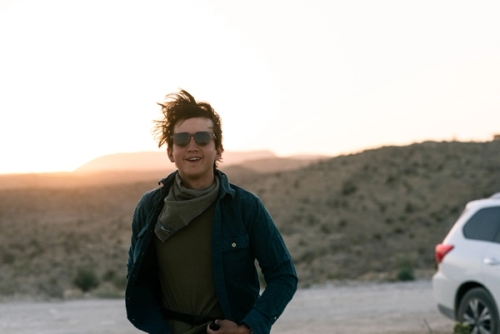
By now, it was nearly mid-day with temperatures rising, and we’d ridden almost 20 miles only to make it back to where we’d started. Luckily, we had a backup plan: we’d ride the highway, passing the outlet for our commandeered county road, and rejoin the original route, making it an 80-mile day. But that’d still be manageable, right? The sun on the dark pavement said otherwise, and as we hit a series of short, steep climbs, it claimed its first victim.
Rob had been wary coming into the ride. Being a new dad didn’t allow for as much saddle time as he would have liked before his first bikepacking trip, but with reassurances from the team, he decided to give it a try. Now, facing temperatures that continued to climb, he decided it’d be better if he didn’t and smartly ended his ride. As they say, if you can’t stand the heat, turn around, ride a couple hours back to camp, grab the car, drive to the next campsite and don’t end up in the hospital.
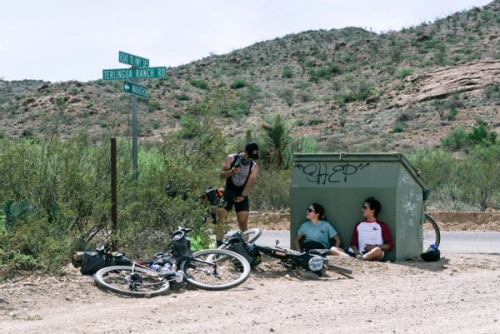
Drinking water what felt like every few seconds, our quartet continued. We were now back on gravel with the sun directly overhead. We stopped whenever we found shade to rehydrate, eat salty snacks and reapply sunscreen, but even so, it was hard to keep up with the heat. The road was mellow and the scenery stunning, but the sun just wouldn’t let up. When sheltered from its rays, the temperature was almost pleasant. But as soon as you stepped out of the shade, you were back in the inferno—and there was hardly anywhere to hide riding this particular circle of hell.
Sometime around 3 or 4 o’clock, we ran into Rob. Worried about the heat, he’d come to refill our water bottles after locating our next campsite further down the road. We topped off and dropped a few bags in his dusty SUV, then kept rolling, followed by less-than-encouraging calls of “You’ve still got a pretty good ways to go!” Luckily, after another hour, the sun was finally softening, and the gravel road turned to pavement, carrying us the last bit of distance downhill to our destination. As we set up camp, though, we started to sense that Mike wasn’t feeling quite right—perhaps tipped off by him telling us that he wasn’t feeling quite right. Our suspicions were confirmed by full body cramps, then shakes, then vomiting. Despite all the water he’d had, Mike was severely dehydrated and needed medical help.

He spent the night in the closest clinic hooked up to a series of IVs, emerging the following morning feeling better, but understandably reticent to ride. Now a group of three, David, Natalie and I knew we needed to reexamine our plan. We’d barely made it through day one with water stops on either end, and the forecast wasn’t looking friendlier for days two, three or four. Water was also to grow increasingly scarce as we carried on, with no refill options for more than 100 miles towards the end of our scheduled ride—typically fine, but unthinkable in such extreme heat.
Instead, we decided the safest way was to stay direct, crossing the park on pavement while still enjoying the amazing scenery, but with more water stops along the way back to Terlingua. From there, we’d figure out what to do the remaining two days. We packed up quickly and left camp before the sun was too high, filling our bottles with mostly electrolytes from the limited supply at the Stillwell Camp Store. Riding in the cooler morning air felt nice, but we knew it wouldn’t last and that we needed to cover as much road as possible before it got too hot to handle.
We pedaled past red-tipped ocotillo and flowering prickly pear, robust and vibrant in the Texas sun, as we drank constantly and hid briefly whenever we found shade. We planned to spend the hottest part of the afternoon at Panther Junction, a ranger station with nearby convenience store, where we could snack, refill and rest for a bit. By the time we got there, and despite our best efforts, David and I were already so dehydrated that, to avoid cramps, we each had to buy a pickle-in-a-bag and drink the salty juice. Natalie, meanwhile, remained as cool as our uneaten cucumbers.

Before long, Rob arrived. He’d picked Mike up from the hospital and stopped by to see if we needed anything. Taking the excuse to dump our bags again, we made plans to meet up at camp in a few more hours—If we’re not back by dark, send help. Luckily, with the hottest part of the day having passed, we enjoyed the rest of our quiet, stunning road ride through the heart of Big Bend National Park, rolling into camp with the sun just above the horizon. Day two, done.
Big Bend is a panorama of mountains, buttes and protected Chihuahuan Desert lands, drawing hikers and bikers from across the country to explore its sunbaked beauty. One of the park’s most notable natural features is the Santa Elena Canyon. Bisected by the Rio Grande, Santa Elena sits on the park’s southern edge, marking the made-up border between the US and Mexico. To get there, we’d follow the washboarded gravel of Old Maverick Road, enjoying a dip in the river before cycling back to Terlingua to end day three.
The plan – which we’d hatched over dinner served at a local restaurant by a “fourth-generation cattle rancher on a plant-based diet” – for once, went smoothly. As Rob and Mike packed up to drive back to Austin, Natalie, David and I rolled out in the direction of Old Maverick Road. Before long, we were skipping over chunky gravel, headed south with Santa Elena steadily growing larger as we slowly approached. The Rio Grande was low when we arrived, so we followed its banks, leaving our bikes behind on the beach and heading into the canyon. Marveling at its steep, staggeringly high walls, we hid in an endless amount of shade and, for a few hours, enjoyed the cool water on our worn-out feet.
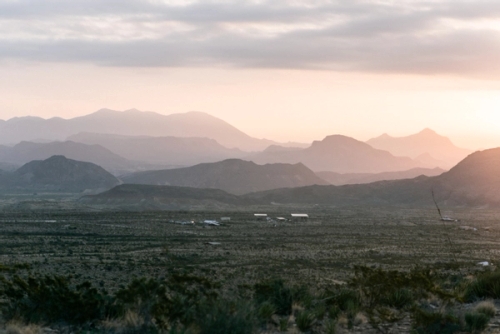
- : Visit our friends at Other Means Magazine